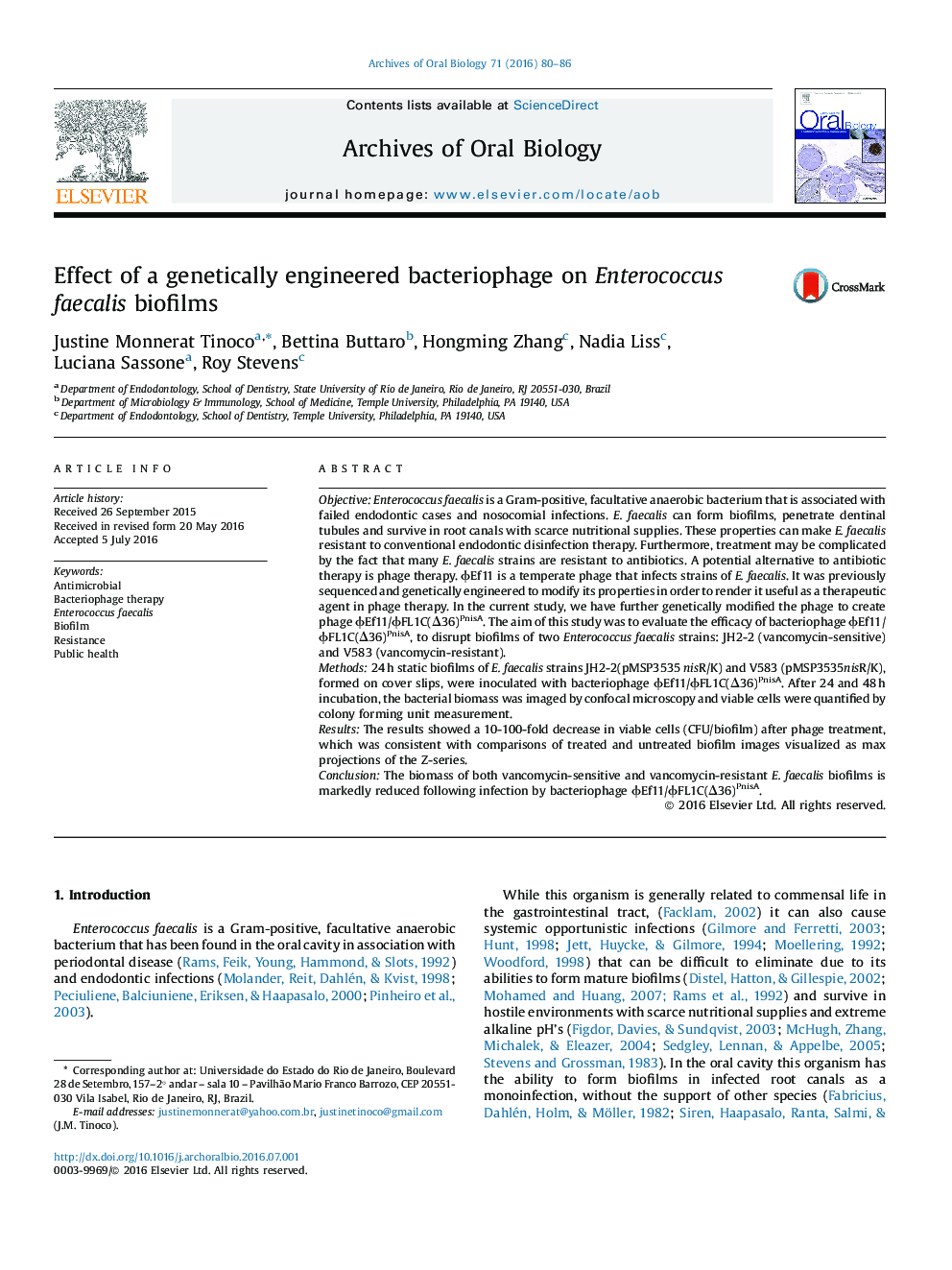| کد مقاله | کد نشریه | سال انتشار | مقاله انگلیسی | نسخه تمام متن |
|---|---|---|---|---|
| 3120570 | 1583282 | 2016 | 7 صفحه PDF | دانلود رایگان |
• An exogenous inducible promoter controls the phage lytic cycle functions.
• Biofilms of both E. faecalis strains were disrupted by infection with bacteriophage.
• Confocal Microscopic analysis showed reduction of biomass in phage-treated biofilms.
• Dead cells could be seen throughout the depth of the phage-treated biofilm layers.
• A 10-100-fold decrease in viable cells was observed after bacteriophage treatment.
ObjectiveEnterococcus faecalis is a Gram-positive, facultative anaerobic bacterium that is associated with failed endodontic cases and nosocomial infections. E. faecalis can form biofilms, penetrate dentinal tubules and survive in root canals with scarce nutritional supplies. These properties can make E. faecalis resistant to conventional endodontic disinfection therapy. Furthermore, treatment may be complicated by the fact that many E. faecalis strains are resistant to antibiotics. A potential alternative to antibiotic therapy is phage therapy. ϕEf11 is a temperate phage that infects strains of E. faecalis. It was previously sequenced and genetically engineered to modify its properties in order to render it useful as a therapeutic agent in phage therapy. In the current study, we have further genetically modified the phage to create phage ϕEf11/ϕFL1C(Δ36)PnisA. The aim of this study was to evaluate the efficacy of bacteriophage ϕEf11/ϕFL1C(Δ36)PnisA, to disrupt biofilms of two Enterococcus faecalis strains: JH2-2 (vancomycin-sensitive) and V583 (vancomycin-resistant).Methods24 h static biofilms of E. faecalis strains JH2-2(pMSP3535 nisR/K) and V583 (pMSP3535nisR/K), formed on cover slips, were inoculated with bacteriophage ϕEf11/ϕFL1C(Δ36)PnisA. After 24 and 48 h incubation, the bacterial biomass was imaged by confocal microscopy and viable cells were quantified by colony forming unit measurement.ResultsThe results showed a 10-100-fold decrease in viable cells (CFU/biofilm) after phage treatment, which was consistent with comparisons of treated and untreated biofilm images visualized as max projections of the Z-series.ConclusionThe biomass of both vancomycin-sensitive and vancomycin-resistant E. faecalis biofilms is markedly reduced following infection by bacteriophage ϕEf11/ϕFL1C(Δ36)PnisA.
Journal: Archives of Oral Biology - Volume 71, November 2016, Pages 80–86
